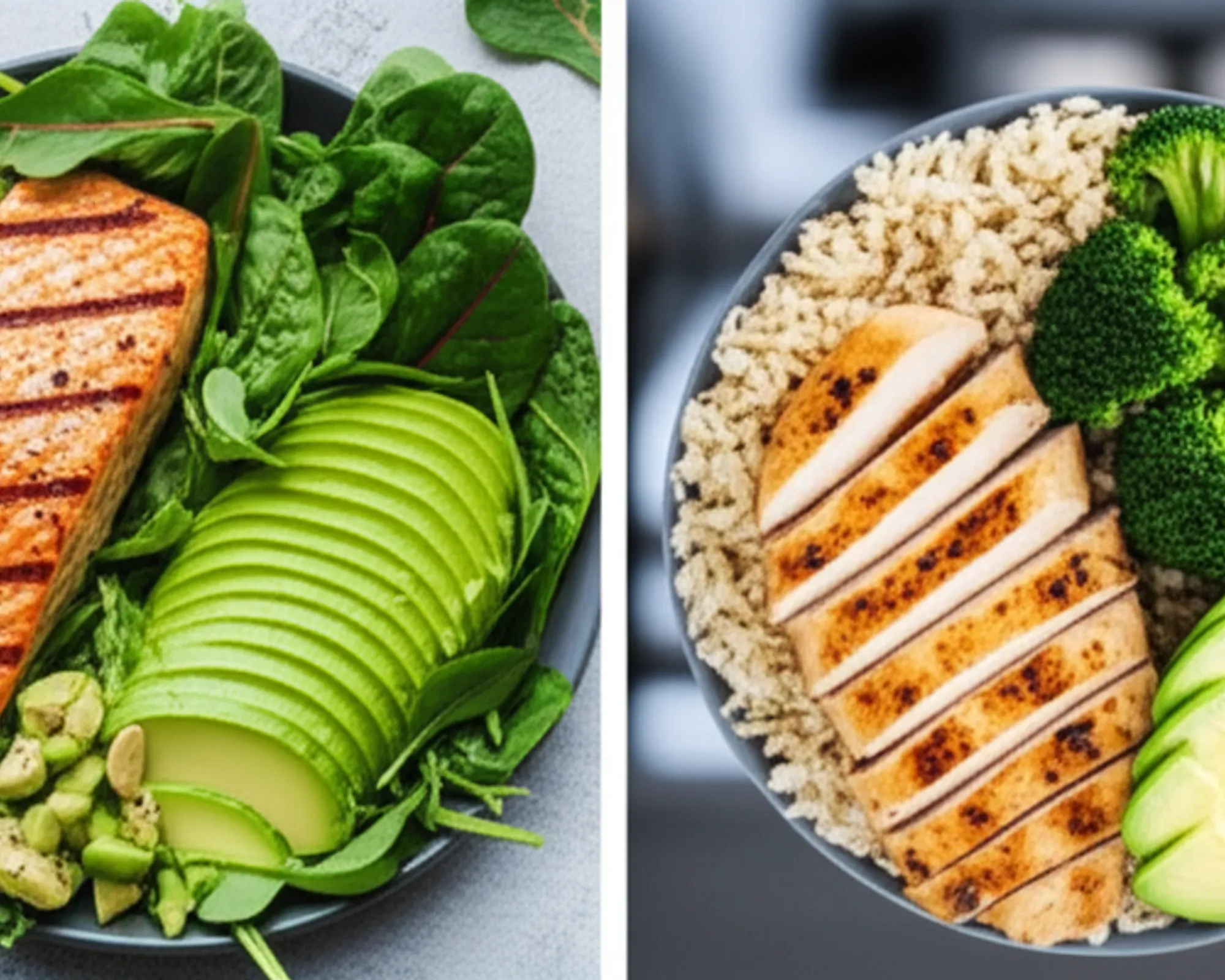How to Track Progress at the Gym

Stepping into the gym can be exhilarating, but without a clear way to measure your journey, it's easy to feel lost or stuck. Tracking your progress isn't just about numbers on a scale; it's a vital tool for staying motivated, making informed adjustments to your routine, and ultimately achieving your fitness goals. Whether you're aiming for strength gains, weight loss, improved endurance, or simply better overall health, understanding how to effectively track your progress is paramount. Let's dive into the essential methods and why they matter.
Why Tracking Progress Matters
Imagine setting sail without a compass. You might drift, but you'll never reach your desired destination efficiently. The gym is no different. Tracking progress serves several crucial purposes:
- Motivation & Accountability: Seeing tangible improvements, no matter how small, is a powerful motivator. It validates your hard work and encourages you to keep pushing.
- Identifying Plateaus: If your progress stalls, your tracking data will clearly show it. This allows you to proactively adjust your training or nutrition before demotivation sets in.
- Optimizing Your Program: Tracking helps you understand what works best for your body. Is that new training split delivering results? Is your current caloric intake appropriate? Data provides the answers.
- Injury Prevention: By logging your workouts, you can spot patterns that might lead to overtraining or indicate the need for more recovery, thus reducing injury risk.
- Celebrating Success: It gives you concrete achievements to celebrate, reinforcing positive habits and building confidence.
Effective Ways to Track Your Progress
1. The Workout Log/Journal
This is arguably the most fundamental and effective method. Whether you prefer a physical notebook or a dedicated fitness app, logging your workouts provides invaluable insights.
What to Record:
- Date & Time: Helps identify patterns related to your energy levels.
- Exercises Performed: List every exercise.
- Sets & Reps: Crucial for strength and hypertrophy tracking.
- Weight Used: The most direct measure of strength progression.
- Rest Periods: Important for understanding intensity and recovery.
- RPE (Rate of Perceived Exertion) or RIR (Reps In Reserve): Subjective measures of how hard you worked, useful for managing fatigue.
- Notes: How you felt, any pain, adjustments made, personal bests, mood.
Benefits: Provides a clear record of your training volume and intensity. It allows you to practice progressive overload by aiming to lift more, do more reps, or increase volume over time.
2. Body Composition Tracking
While the scale is a common tool, it only tells part of the story. Muscle weighs more than fat, so your weight might stay the same or even increase as you get fitter. Focus on body composition changes.
- Body Weight: Use a consistent time (e.g., first thing in the morning, after using the restroom) and day (e.g., once a week).
- Body Fat Percentage: Methods include bioelectrical impedance scales (convenient but can be inaccurate), skinfold calipers (requires skill), DEXA scans (gold standard, but costly and less accessible), or even just visual assessment.
- Circumference Measurements: Measure arms, chest, waist, hips, and thighs. This is great for tracking fat loss (waist, hips) or muscle gain (arms, thighs, chest). Be consistent with measuring points.
Benefits: Gives a more holistic view of physical changes beyond just weight. It helps distinguish between fat loss and muscle gain.
3. Progress Photos
A picture is worth a thousand words, especially when tracking fitness progress. Take photos under consistent lighting, in the same pose, and wearing similar clothing.
- Frequency: Once every 2-4 weeks is usually sufficient.
- Poses: Front, side, and back poses are ideal to capture changes from all angles.
Benefits: Offers a visual representation of your transformation that numbers alone cannot capture. It's incredibly motivating to see the subtle, gradual changes over time.
4. Performance Metrics (Cardio & Flexibility)
If your goals include cardiovascular health or flexibility, these metrics are essential.
- Cardio: Track distance, time, pace, heart rate, and perceived effort for runs, cycles, or other cardio activities. Aim to improve these over time (e.g., run further in the same time, reduce pace for the same distance).
- Flexibility/Mobility: Note your range of motion improvements in specific stretches or movements. For example, how close you can touch your toes, or how deep you can squat comfortably.
Benefits: Provides a comprehensive view of your overall athletic improvement, not just strength or aesthetics.
5. How You Feel (Subjective Measures)
Don't underestimate the power of how you feel. While not quantitative, these subjective markers are crucial for holistic well-being and can indicate underlying issues or progress.
- Energy Levels: Do you feel more energetic throughout the day?
- Sleep Quality: Are you sleeping better and feeling more rested?
- Recovery: Are you recovering faster between workouts?
- Mood & Confidence: Do you feel happier, more confident, or less stressed?
- Daily Function: Are everyday tasks becoming easier? (e.g., carrying groceries, climbing stairs)
Benefits: These qualitative improvements often reflect better overall health and fitness, even when physical changes are slow.
Analyzing Your Data and Making Adjustments
Collecting data is only half the battle; interpreting it is where the real magic happens. Look for trends. Are your lifts steadily increasing? Is your waist measurement decreasing? Are you consistently feeling more energetic?
- Consistent Progress: If things are going well, keep doing what you're doing.
- Plateaus: If progress stalls, it's time to adjust. This could mean changing exercises, increasing/decreasing volume or intensity, adjusting nutrition, or focusing more on recovery.
- Setbacks: Don't be discouraged by minor setbacks. Analyze them. Did you miss sleep? Were you stressed? Use them as learning opportunities.
Common Tracking Mistakes to Avoid
- Obsessive Tracking: Don't let tracking become an unhealthy obsession. Daily weight fluctuations are normal; focus on weekly or monthly trends.
- Comparing to Others: Your journey is unique. Focus on your personal progress, not someone else's.
- Inconsistency: Sporadic tracking provides little value. Aim for consistency, even if it's just basic metrics.
- Ignoring Subjective Data: Don't just focus on numbers. How you feel mentally and physically is equally important.
- Lack of Action: Data is useless if you don't use it to inform your next steps.
Consistency is Key
Tracking progress is a marathon, not a sprint. Be patient, be consistent, and be kind to yourself. There will be ups and downs, but by diligently monitoring your journey, you'll gain invaluable insights into your body's capabilities and how to unlock your full potential. Embrace the process, celebrate every small victory, and enjoy the rewarding journey of seeing yourself transform.
Conclusion
Tracking progress at the gym is not merely an optional add-on; it's a fundamental component of a successful and sustainable fitness journey. By meticulously logging your workouts, monitoring body composition changes, capturing visual progress, and paying attention to how you feel, you equip yourself with the tools to navigate challenges, optimize your efforts, and continuously move closer to your fitness aspirations. Start tracking today, and watch your dedication translate into undeniable results.


